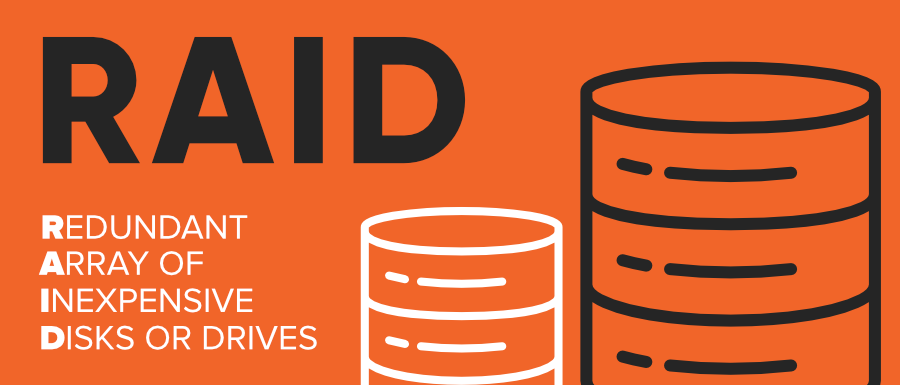Understanding RAID: Redundant Array of Inexpensive Disks
 Cloud Tuned
Cloud Tuned
Understanding RAID: Redundant Array of Inexpensive Disks
RAID, or Redundant Array of Independent Disks, is a technology that enables data storage across multiple hard drives to improve performance, redundancy, or both. By distributing data across multiple disks, RAID provides increased reliability and performance compared to single disk configurations. Let's delve into how RAID works, the different RAID configurations, their respective use cases, and the pros and cons of each.
How RAID Works
RAID works by combining multiple physical drives into a single logical unit. There are several RAID levels, each offering different benefits and trade-offs. These levels determine how data is distributed, mirrored, or striped across the disks.
The main RAID configurations include:
- RAID 0
- RAID 1
- RAID 5
- RAID 6
- RAID 10
RAID 0
- Striping: Data is split across multiple drives equally.
- Performance: Offers improved read/write speeds as data can be accessed from multiple disks simultaneously.
- Use Cases: Ideal for applications requiring high performance and large storage capacity, such as video editing or gaming.
- Pros: Enhanced performance, simple implementation.
- Cons: No data redundancy, failure of one drive leads to data loss.
RAID 1
- Mirroring: Data is duplicated across two or more drives.
- Redundancy: Provides fault tolerance as data remains accessible if one drive fails.
- Use Cases: Critical applications where data integrity is paramount, such as database servers or financial systems.
- Pros: Data redundancy, minimal downtime during drive failure.
- Cons: Costlier as it requires doubling the storage capacity, reduced write performance compared to RAID 0.
RAID 5
- Striping with Parity: Data is striped across multiple drives with parity distributed across all disks.
- Fault Tolerance: Can tolerate the failure of one drive without losing data.
- Use Cases: Suitable for environments requiring both performance and data redundancy, such as file servers or small business environments.
- Pros: Good balance of performance and redundancy, cost-effective.
- Cons: Slower write performance due to parity calculations, risk of data loss during drive rebuild if another drive fails.
RAID 6
- Double Parity: Similar to RAID 5 but with additional parity information, allowing for the failure of two drives without data loss.
- Enhanced Fault Tolerance: Provides higher resilience to drive failures compared to RAID 5.
- Use Cases: Mission-critical applications demanding high fault tolerance, such as enterprise storage or archival systems.
- Pros: Increased fault tolerance, data integrity even with two simultaneous drive failures.
- Cons: Reduced usable storage capacity due to double parity, slower write performance.
RAID 10 (RAID 1+0)
- Combination: Combines mirroring (RAID 1) and striping (RAID 0).
- Performance and Redundancy: Offers both high performance and fault tolerance.
- Use Cases: Intensive applications requiring both speed and redundancy, such as database servers or virtualization platforms.
- Pros: Excellent performance and fault tolerance, fast rebuild times.
- Cons: Higher cost and complexity due to mirroring and striping.
Other RAID Configurations
In addition to the commonly known RAID levels discussed above, there are several other RAID configurations that serve specific purposes or offer variations of the main RAID levels. These include RAID 2, RAID 3, RAID 4, RAID 7, and nested RAID configurations such as RAID 50 and RAID 60. While these configurations are less commonly used in mainstream environments, they may be suitable for specialized applications or specific performance and redundancy requirements. It's essential to research and evaluate these alternatives based on your unique storage needs and infrastructure considerations.
Conclusion
RAID technology offers a flexible approach to data storage, providing various configurations to meet different performance, capacity, and redundancy requirements. Understanding the strengths and weaknesses of each RAID level is crucial in selecting the most suitable option for specific use cases. Whether it's optimizing performance for gaming rigs with RAID 0 or ensuring data integrity in enterprise environments with RAID 6, RAID configurations play a vital role in modern storage systems, balancing performance, redundancy, and cost-effectiveness.
Subscribe to my newsletter
Read articles from Cloud Tuned directly inside your inbox. Subscribe to the newsletter, and don't miss out.
Written by
